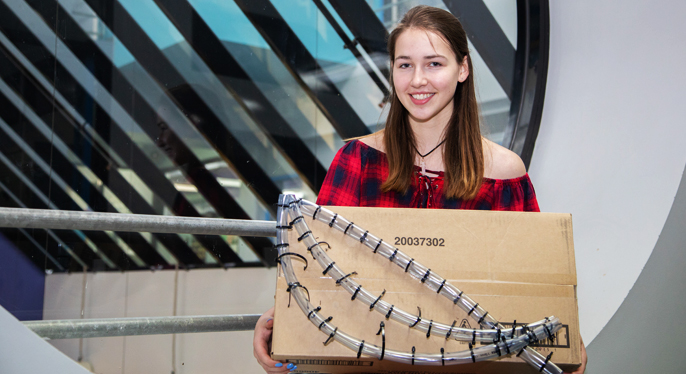Back in the 1696 mathematician Johann Bernoulli posed a curious question, one that Galileo had already pondered, regarding how one finds the fastest descent between two points. Curiously, as Year 11 student Caitlin Buchan rediscovered, it’s neither a straight line nor a steep curve.
There is a lesser curve, now known as the brachistochrone… from brachisto (shortest) and chrone (time)—that finds the perfect balance between speed and steepness to give the fastest descent between two points.
Roll forward a few centuries and the brachistochrone curve caught the fascination of Caitlin who was required to come up with a question to research for a Physics SAC.
“The brachistochrone is all about gravity and velocity,” Caitlin says.
With a little help from marbles, plastic tubing, zip ties and a cardboard box Caitlin created her own device to test the theory.
“I had problems with marbles getting stuck and ended up using heaps of zip ties to keep the tubing exactly in place,” Caitlin said. “Once I got those problems sorted, the fact that the marbles were in the tubing for only about two seconds made it hard to time them accurately with a stopwatch. Instead, I took multiple videos that I later slowed down to gauge accurate times.
“When it all worked, I was like… Yes!”
Caitlin is not only a bit of a maths/physics whiz, she also enjoys music composition (see a story about her success covered in eNews on March 6) and has had “a super good year” at BSSC and “made a bunch of new friends.”
“Because we choose our subjects based on passion and they are not just ‘a subject’, I’ve surprised myself with how well I have done.”











